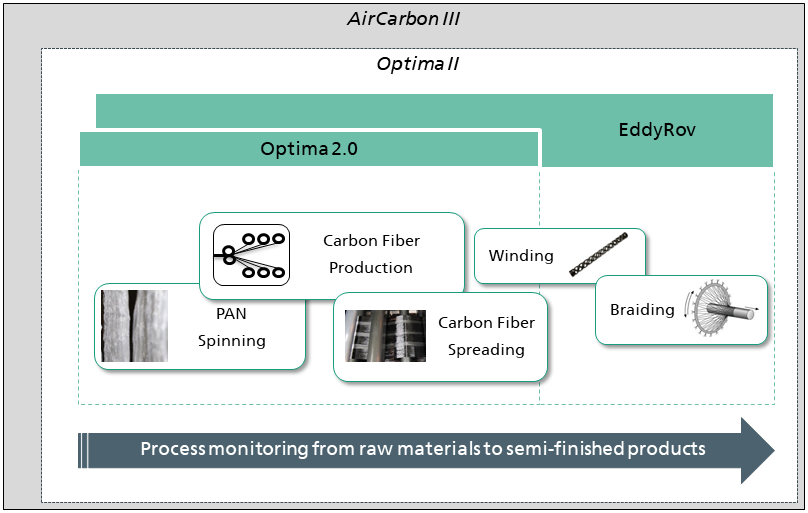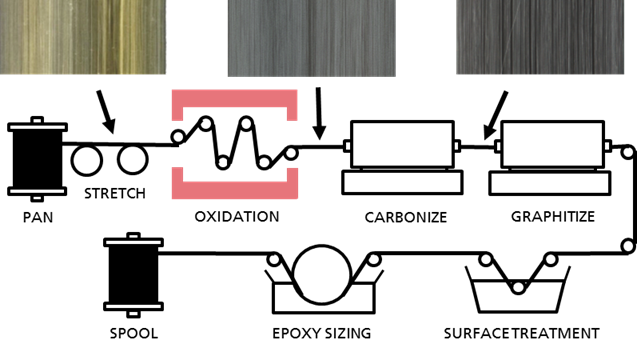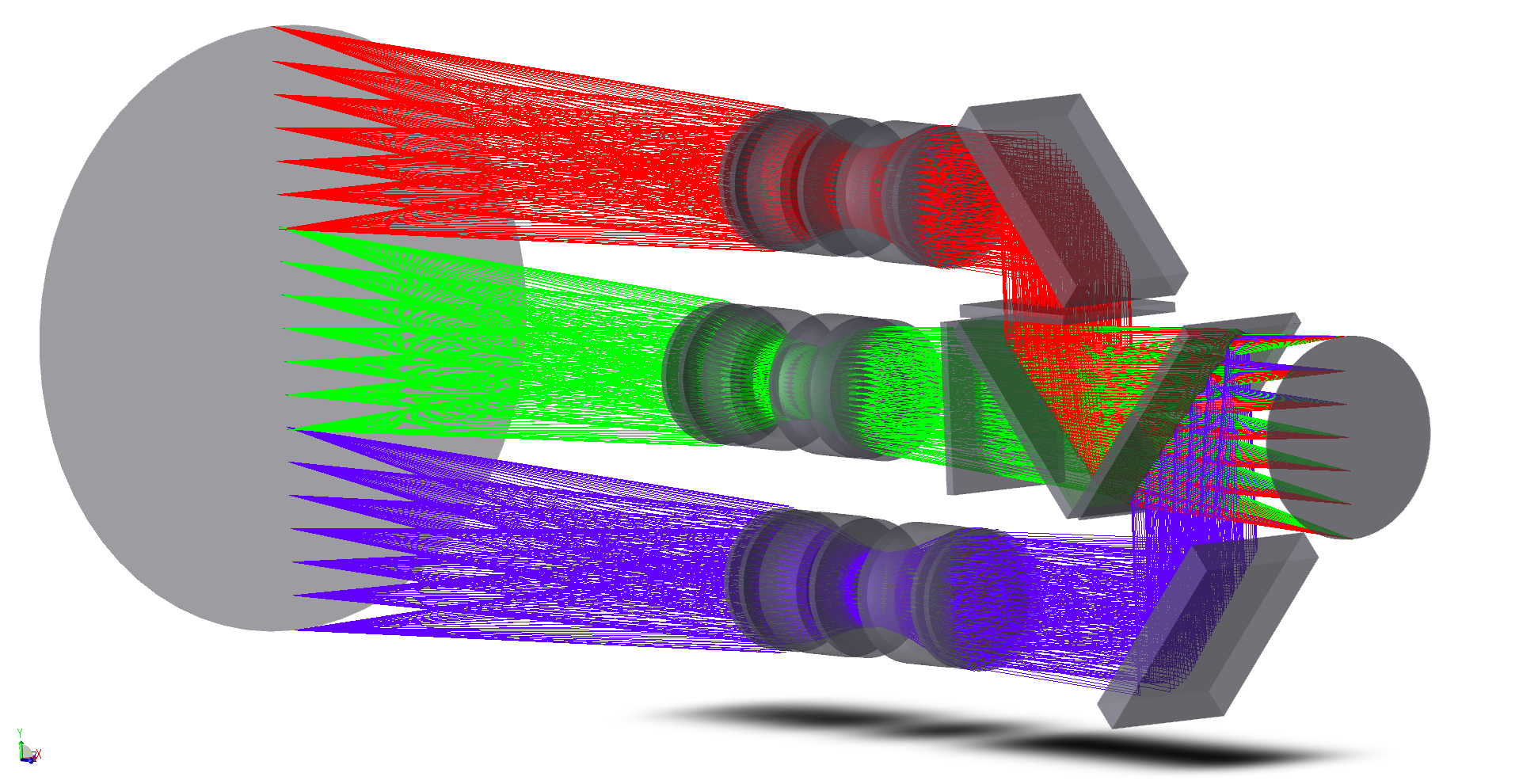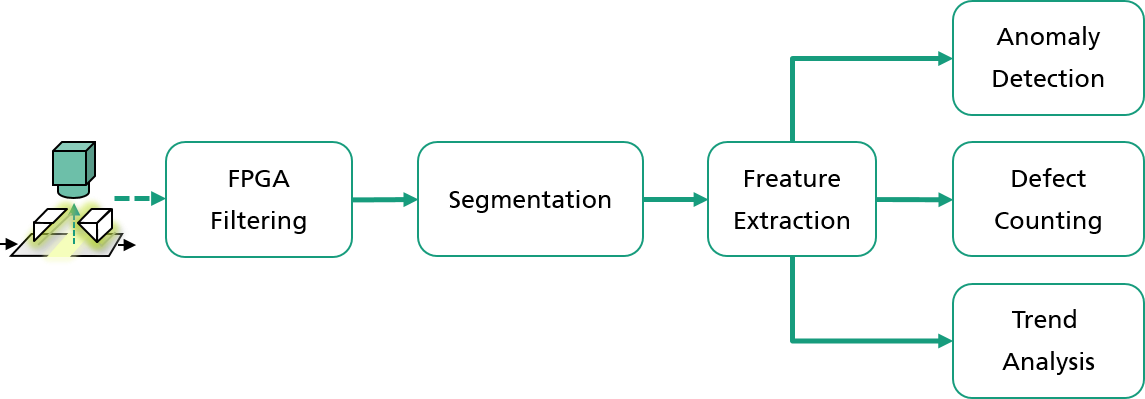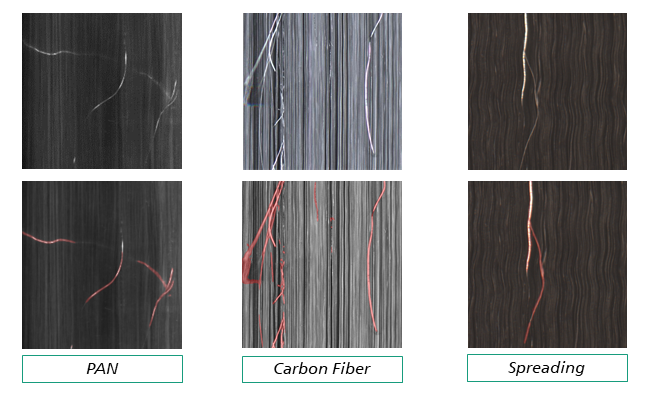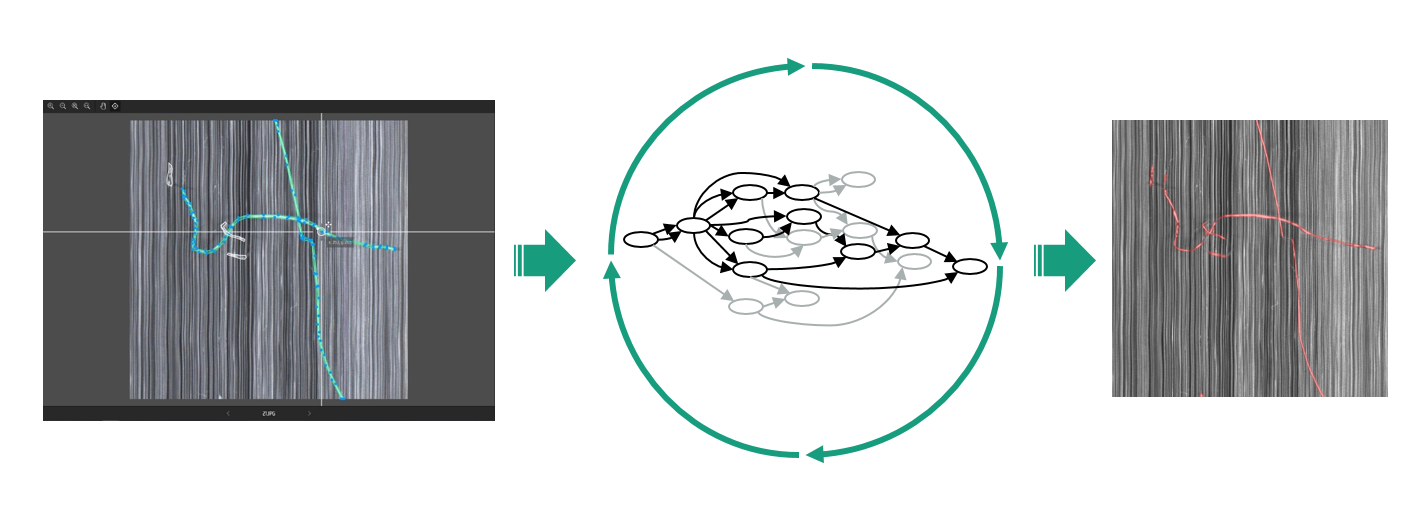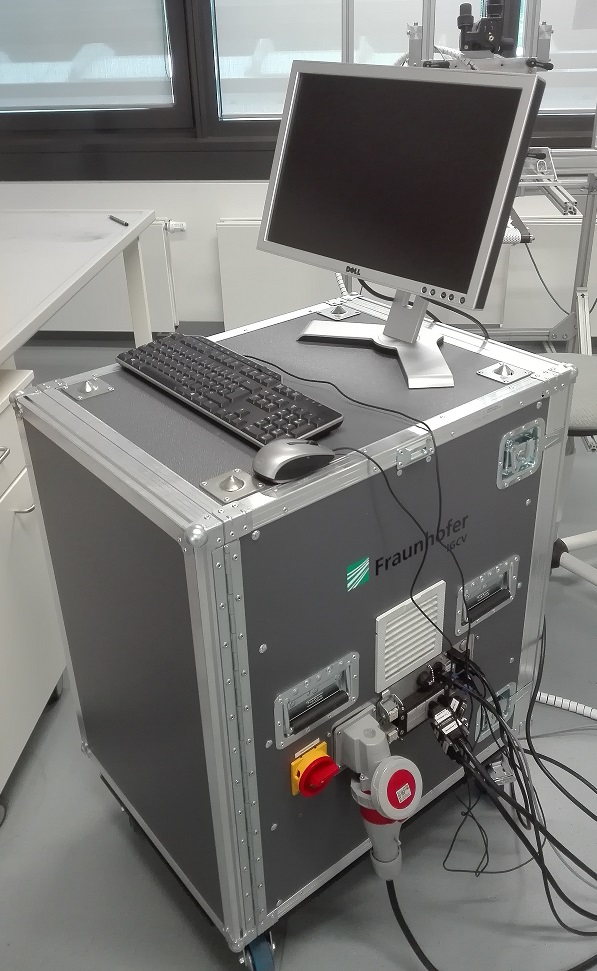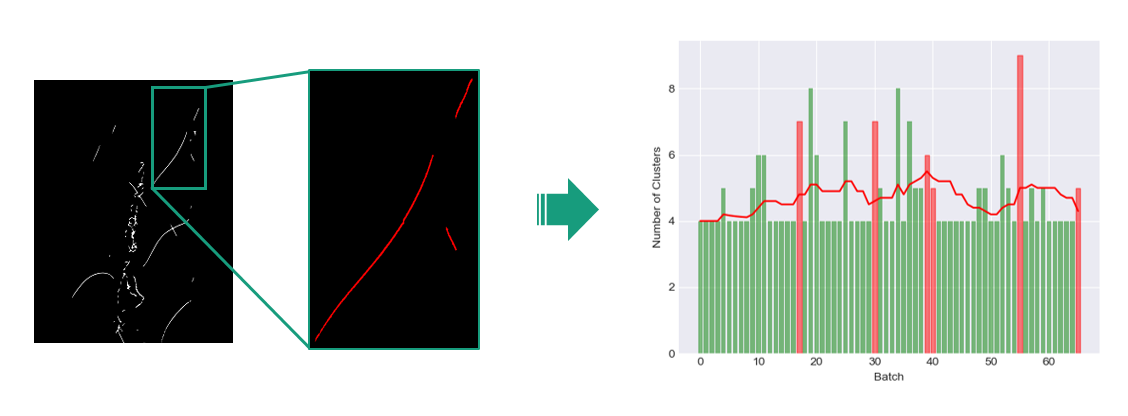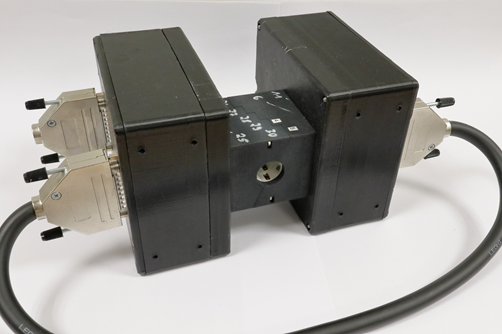High-resolution line scan cameras and eddy current sensors make defects on carbon fibers visible
Fiber quality in production is still largely assessed manually – a process that can be associated with errors. In the successive projects AirCarbon II (2014-2016) and AirCarbon III (2018-2021), Fraunhofer IGCV is cooperating with SGL Carbon GmbH and Chromasens GmbH: together, the partners are developing an automated, inline-capable monitoring solution for carbon fiber production and adjacent processes. A line scan camera with its own optics system and AI-supported, intelligent image processing will be used. In collaboration with Fraunhofer IKTS, eddy current technology for assessing roving quality is being further developed.
